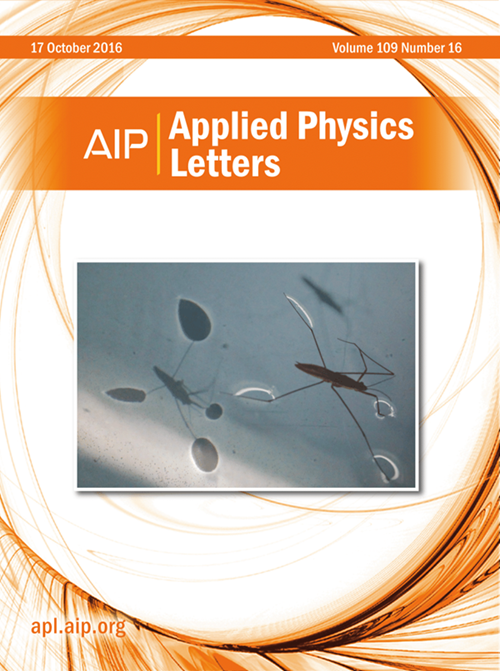基于级联环形谐振器的芯片级自参考温度计
IF 3.5
2区 物理与天体物理
Q2 PHYSICS, APPLIED
引用次数: 0
摘要
在本文中,我们提出了一种基于硅级联微环谐振器(CMRR)的超高稳定性自参考温度传感器,该传感器由涂覆氧化钛(TiO2)的参考环和传感环组成。通过利用TiO2的负热光系数(TOC)来抵消Si的正热光系数(TOC),参考环的温度灵敏度大大降低到4.53 pm/K,而传感环的温度灵敏度为75.06 pm/K。结果表明,采用差分传感方法,CMRR的灵敏度为70.53 pm/K。特别重要的是,该传感方案减轻了激光波动和自热噪声等外部噪声的影响,从而开发出高度稳定的片上温度传感器件。通过将传感器浸入具有超高稳定性的水系统三相点,该器件的温度波动为15.88 mK,比微环谐振器温度传感器提高了一个数量级以上。进一步分析表明,器件自热效应产生的噪声约为13.76 mK,是影响CMRR稳定性的主要噪声源。这项工作表明,CMRR可以作为精确温度监测的范例。本文章由计算机程序翻译,如有差异,请以英文原文为准。
Chip-scale self-referenced thermometer based on cascaded ring resonators
In this paper, we proposed a self-referenced temperature sensor with ultra-high stability based on a silicon cascaded microring resonator (CMRR) comprising a reference ring coated with titanium oxide (TiO2) and a sensing ring. By exploiting the negative thermo-optic coefficient (TOC) of the TiO2 to counterbalance the positive TOC of Si, the temperature sensitivity of the reference ring was greatly reduced to 4.53 pm/K, while the sensing ring is 75.06 pm/K. As a result, the sensitivity of the CMRR is 70.53 pm/K utilizing the differential sensing method. It is of particular significance that this sensing scheme mitigates the impact of external noises such as laser fluctuations and self-heating noises, enabling the development of a highly stable on-chip temperature sensing device. By immersing the sensor in the triple point of water system with ultra-high stability, the device performs a temperature fluctuation of 15.88 mK, which is an improvement of more than an order of magnitude over microring resonator temperature sensors. Further analysis indicates that the noise derived from the self-heating effects of the device is about 13.76 mK, which represents the primary noise source in CMRR stability. This work manifests that the CMRR can serve as a paradigm for precise temperature monitoring.
求助全文
通过发布文献求助,成功后即可免费获取论文全文。
去求助
来源期刊

Applied Physics Letters
物理-物理:应用
CiteScore
6.40
自引率
10.00%
发文量
1821
审稿时长
1.6 months
期刊介绍:
Applied Physics Letters (APL) features concise, up-to-date reports on significant new findings in applied physics. Emphasizing rapid dissemination of key data and new physical insights, APL offers prompt publication of new experimental and theoretical papers reporting applications of physics phenomena to all branches of science, engineering, and modern technology.
In addition to regular articles, the journal also publishes invited Fast Track, Perspectives, and in-depth Editorials which report on cutting-edge areas in applied physics.
APL Perspectives are forward-looking invited letters which highlight recent developments or discoveries. Emphasis is placed on very recent developments, potentially disruptive technologies, open questions and possible solutions. They also include a mini-roadmap detailing where the community should direct efforts in order for the phenomena to be viable for application and the challenges associated with meeting that performance threshold. Perspectives are characterized by personal viewpoints and opinions of recognized experts in the field.
Fast Track articles are invited original research articles that report results that are particularly novel and important or provide a significant advancement in an emerging field. Because of the urgency and scientific importance of the work, the peer review process is accelerated. If, during the review process, it becomes apparent that the paper does not meet the Fast Track criterion, it is returned to a normal track.
 求助内容:
求助内容: 应助结果提醒方式:
应助结果提醒方式:


